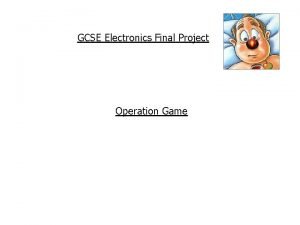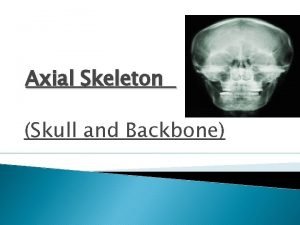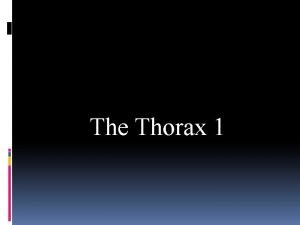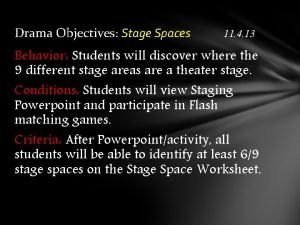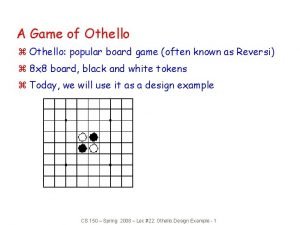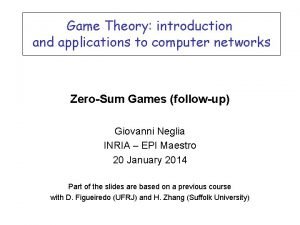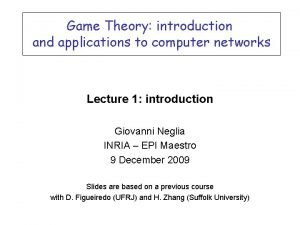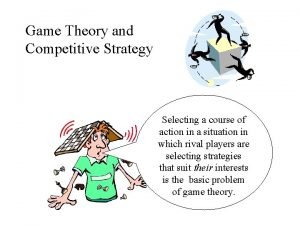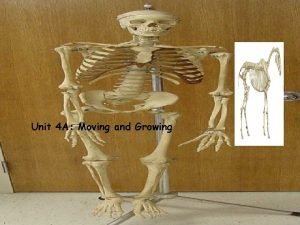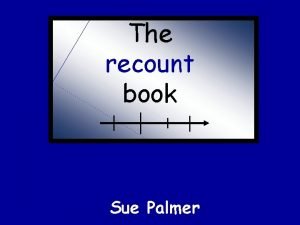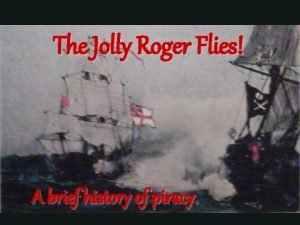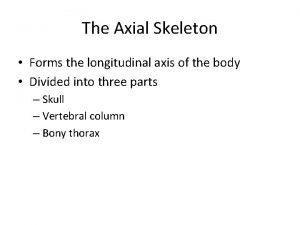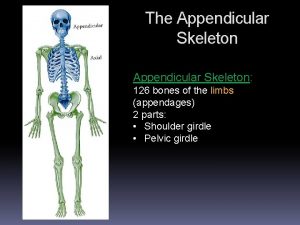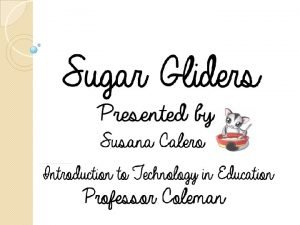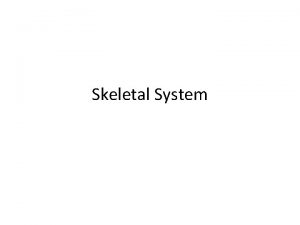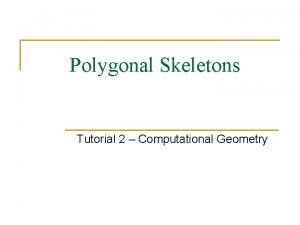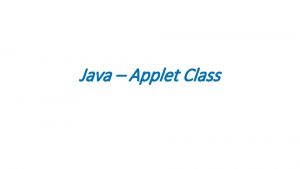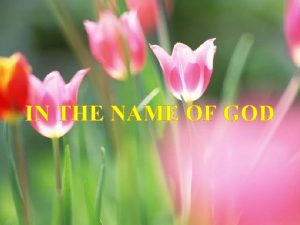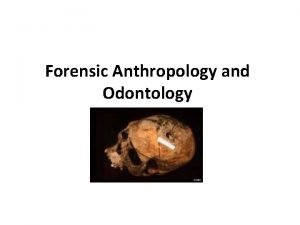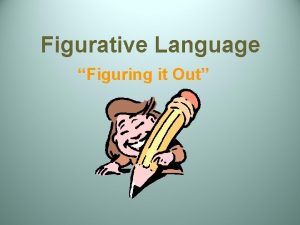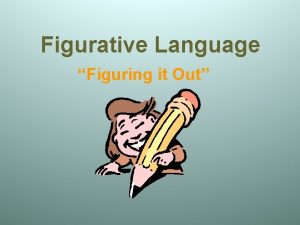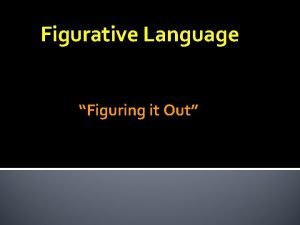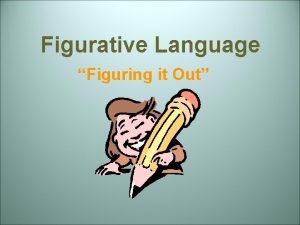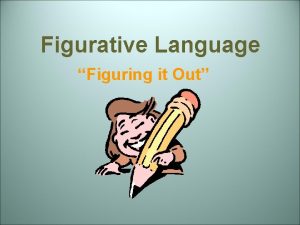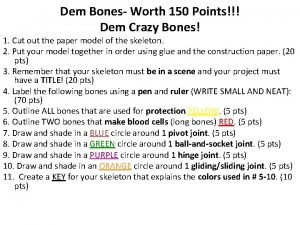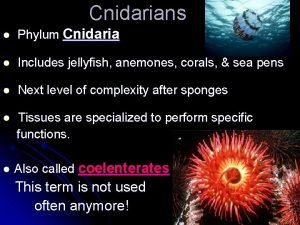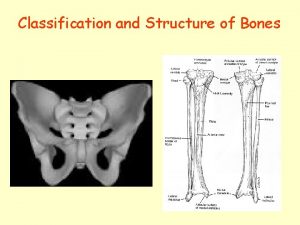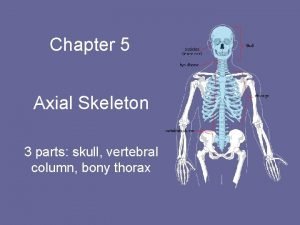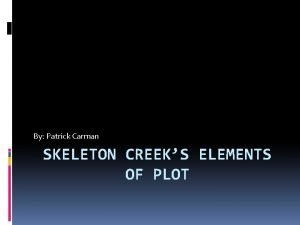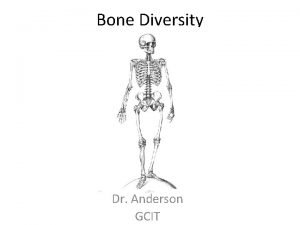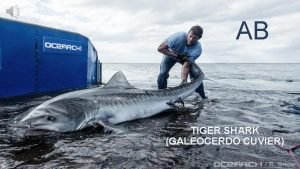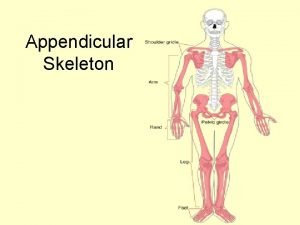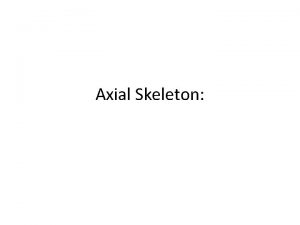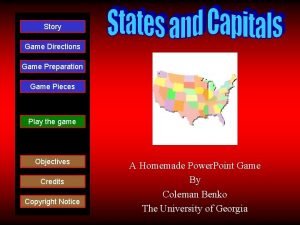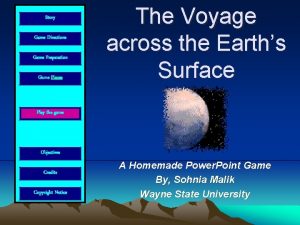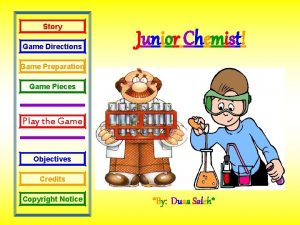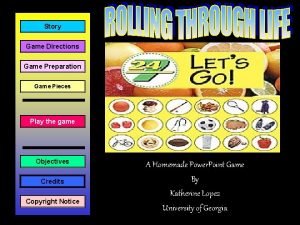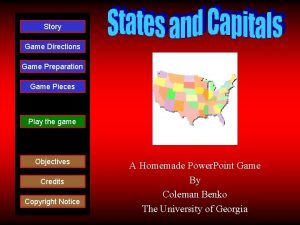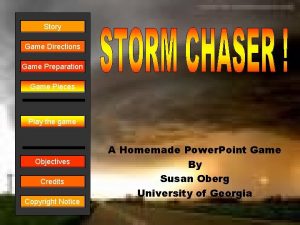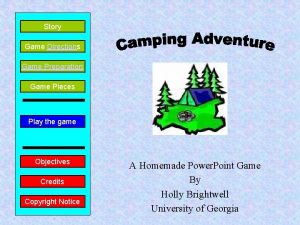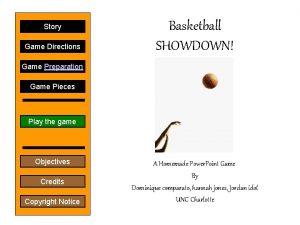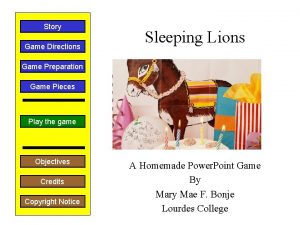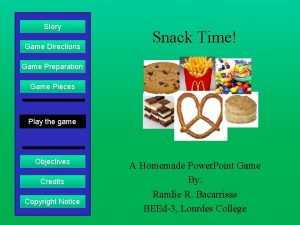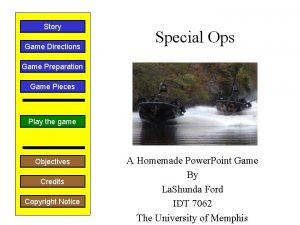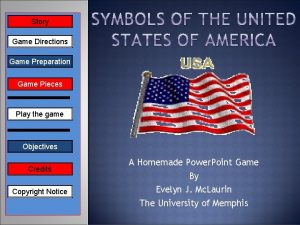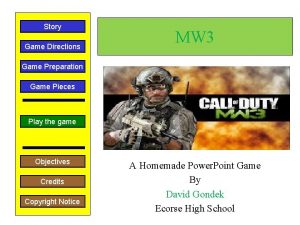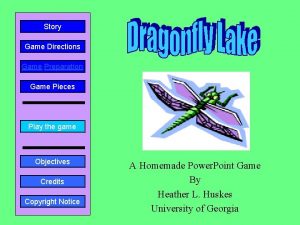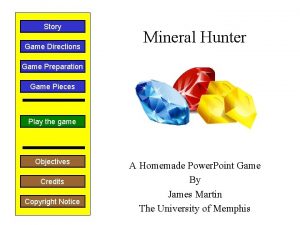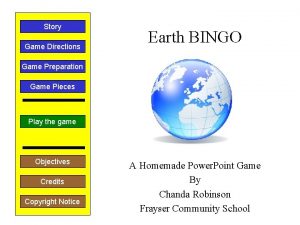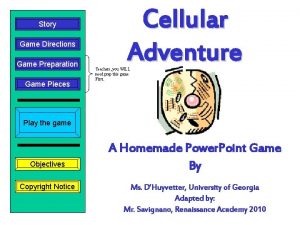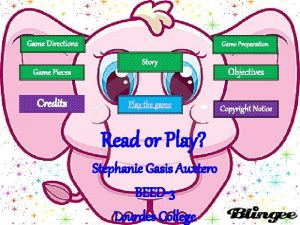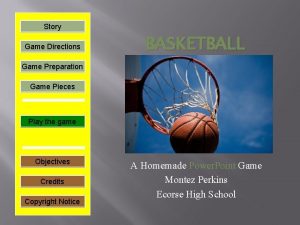STORY GAME DIRECTIONS OPERATION SKELETON GAME PREPARATION GAME



































- Slides: 35

STORY GAME DIRECTIONS OPERATION SKELETON! GAME PREPARATION GAME BOARD GAME PIECES PLAY THE GAME! OBJECTIVE CREDITS COPYRIGHT NOTICE A Homemade Power. Point Game By: Jannelle Moran and Katie Brower UNC Charlotte 2007

The Story of “Operation Skeleton” The game “Operation Skeleton” is a great tool for your students to practice their knowledge about the human skeletal system and the human body. The game was originated by Katie Brower and Jannelle Moran in 2007 and is intended to be used as a learning tool in the third grade classroom. This game is a great way for your students to visually see the human skeleton and a great way for them to practice the NCSCOS objectives. BACK TO HOME

Game Directions • The goal of the game is to practice what you have learned about the human skeleton by answering questions about the human skeleton and the human skeleton joints. • To play the game, you roll the dice and move your game piece the correct amount of spaces. Once you land on a star, on a particular bone, you may then answer a question. If you answer the question correctly, you then get to add that particular bone to your personal skeleton. If you don’t answer the question correctly, you don’t get that particular bone and you may not automatically answer a question on your next turn, you must roll the dice and move to another bone and come back to the one you missed later. Make sure to keep track of the questions that have been answered correctly, that way you don’t repeat questions. • The winner of the game is the first one to complete their personal skeleton. BACK TO HOME GAME BOARD GAME PIECES

Game Preparation • Print out slides 5 and 6, and attach the two halves onto construction paper. This is your game board. • Print out slide 7. Print out enough copies so that you have one for each player. Cut out the whole skeleton and each separate part. Make sure to glue your skeleton to a piece of construction paper. • Print out slide 9 so that you can keep track of the questions answered by crossing out the numbers as the questions are answered correctly. • Print out slide 8 in order to get the game pieces. BACK TO HOME GAME BOARD GAME PIECES

GAME BOARD

GAME BOARD

INDIVIDUAL SKELETONS -Skull -Left Rib Cage -Left Arm Right Arm -Left Hand Right Hand- -Right Rib Cage -Left Leg Right Leg- -Pelvic Bone

GAME PIECES

QUESTIONS PAGE 1 2 3 4 5 6 7 8 9 10 11 12 13 14 15 16 17 18 19 20 BACK TO HOME

Question #1 • How many soft bones are babies born with? 100 300 250 230

Question #2 • How many bones does a full grown adult have? about 192 about 287 about 206 about 300

Question #3 • Which of the following is not a type of joint? hinge joint foot joint ball-and-socket joint pivot joint

Question #4 • Which of these is not an example of a hinge joint? neck jaws elbows knuckles

Question #5 • Which of these is an example of a ball-and-socket joint? elbows toes hips knees

Question #6 • Which of these is not a function of bones? locomotion support protection digestion

Question #7 • What is the skeletal system made up of? bones muscles skin veins

Question #8 • How often does your heart beat? about 30 times an hour about 80 times a minute about 50 times a second about 60 times a minute

Question #9 • Which of these is not a muscle? cardiac muscle bicep muscle radius muscle calf muscle

Question #10 • What is a ball-and-socket joint? when two straight bones come together to form a hinge when one bone twists within the cup or ring of another bone when the joint causes the bone to not move at all when one bone fits into the hole of another bone

Question #11 • What is a pivot joint? when one bone fits into the hole of another bone when one bone twists within the cup or ring of another bone when the joint causes the bone to not move at all when two straight bones come together to form a hinge

Question #12 • What is the hardest working muscle in your body? bicep muscle calf muscle cardiac muscle tricep muscle

Question #13 • Which of the following is a bone in your body? femur bone esporal bone radial bone heart bone

Question #14 • What is the study of bones called? psychology zoology osteology boneology

Question #15 • Which of the following is not a type of muscle? cardiac muscle smooth muscle skeletal muscle bone muscle

Question #16 • What do muscles do? turn energy into movement carry the blood throughout your body filter out wastes from your body transmit messages to your brain

Question #17 • What are the two kinds of bone tissue? compact bone and nerve bone spongy bone and nerve bone compact bone and spongy bone compact bone and joint bone

Question #18 • What kind of bone tissue is rock hard? compact bone spongy bone nerve bone joint bone

Question #19 • What kind of bone tissue contains collagen, which makes it flexible? compact bone joint bone nerve bone spongy bone

Question #20 • What is the name of the bone that surrounds the brain called? sutures cranium maxilla mandible

BACK TO THE QUESTIONS PAGE

BACK TO THE QUESTIONS PAGE

Educational Objectives • Audience: Intended for children ages 9 and above. Intended for grades 3 and above. • Subject Area Objectives: NCSCOS Objective 4. 01 -Students will be able to identify the skeleton as a system of the human body. NCSCOS Objective 4. 02 -Students will be able to describe several functions of bones: -support -protection -locomotion NCSCOS Objective 4. 03 -Students will be able to describe the functions of different kinds of joints: -hinge -ball and socket -gliding BACK TO HOME

Credits All teachers and students at non-profit schools can use, revise or adapt this game at will at no cost on the condition that all prior designers are cited • Originally designed by Katie Brower and Jannelle Moran, University of North Carolina at Charlotte, February 19, 2007 with the title “Operation Skeleton”. BACK TO HOME

Copyright • Copyright 2007 Katie Brower Jannelle Moran • Permission to copy this game at no cost is granted to all teachers and students of non-profit schools. • Permission is also granted to all teachers and students of non-profit schools to make revisions to this game for their own purposes, on the condition that this copyright page and the credits page remain part of the game. Teachers and students who adapt the game should add their names and affiliations to the credits page without deleting and names already there. BACK TO HOME

OUR GAME • This game can be used in the classroom to practice the NCSCOS objectives 4. 014. 03 for third grade. It is a learner centered Power. Point because it is asking the student questions to help them review. It could be used as a great review for a test and as an assistant to the teacher, while teaching the class as a whole.
 Directions for operation game
Directions for operation game Axial vs appendicular skeleton
Axial vs appendicular skeleton Axial skeleton vs appendicular
Axial skeleton vs appendicular Axial skeleton vs appendicular skeleton
Axial skeleton vs appendicular skeleton Upstage and downstage
Upstage and downstage Move rulesz
Move rulesz Rose theorem
Rose theorem Game theory in operation research
Game theory in operation research Game theory in operation research
Game theory in operation research Moving and growing
Moving and growing Sue palmer skeletons for writing
Sue palmer skeletons for writing Pirate flag skeleton stabbing heart
Pirate flag skeleton stabbing heart The axial skeleton forms the longitudinal axis of the body
The axial skeleton forms the longitudinal axis of the body Innominate bone
Innominate bone Sugar glider lifespan
Sugar glider lifespan 3 functions of skeleton
3 functions of skeleton Hpps symbol
Hpps symbol Computational geometry tutorial
Computational geometry tutorial Applet skeleton in java
Applet skeleton in java Peripheral skeleton
Peripheral skeleton Difference between male and female skeletons
Difference between male and female skeletons Ravenous and savage from its long polar journey
Ravenous and savage from its long polar journey She has a skeleton in her closet figurative language
She has a skeleton in her closet figurative language Biting the hand that feeds you figurative language
Biting the hand that feeds you figurative language She has a skeleton in her closet figurative language
She has a skeleton in her closet figurative language Your face is killing me figurative language
Your face is killing me figurative language Dem crazy bones
Dem crazy bones L
L Baby skeleton vs adult
Baby skeleton vs adult Phosphorous oxide formula
Phosphorous oxide formula Chapter 5 the skeletal system axial skeleton skull
Chapter 5 the skeletal system axial skeleton skull Carbon skeleton
Carbon skeleton Gladys morgan skeleton creek
Gladys morgan skeleton creek Peripheral skeleton
Peripheral skeleton Skeleton equation
Skeleton equation Tiger shark outline
Tiger shark outline
